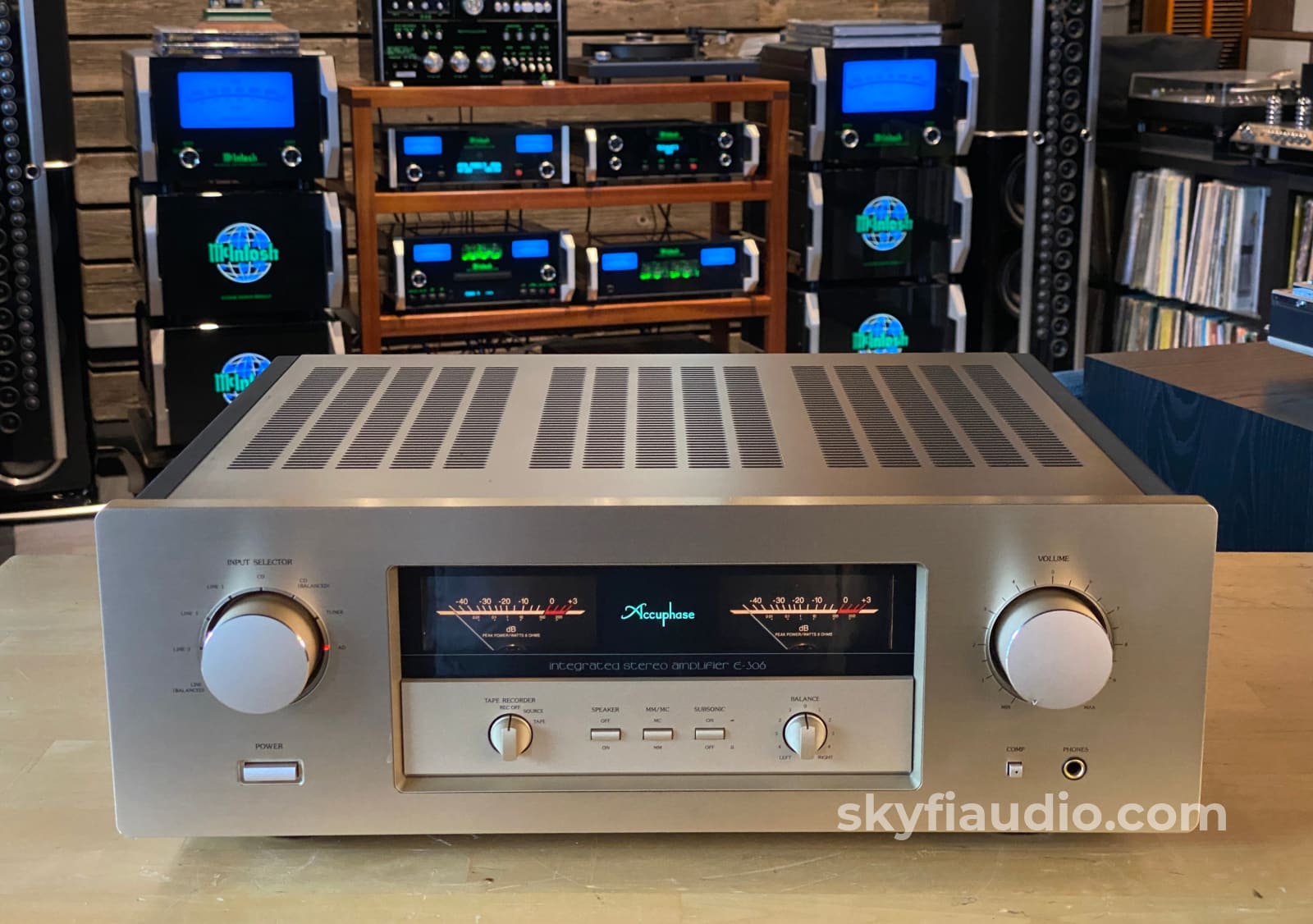
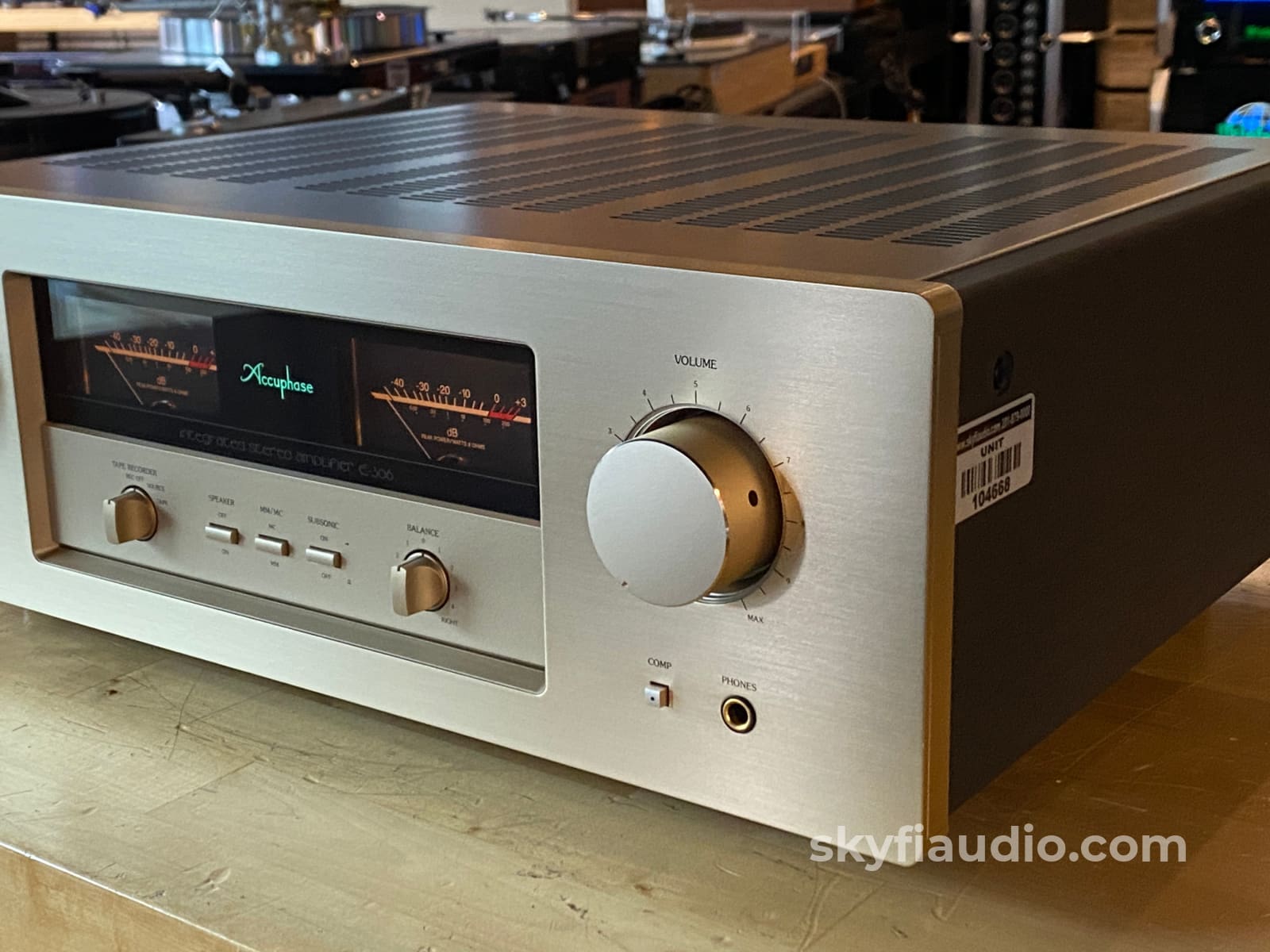

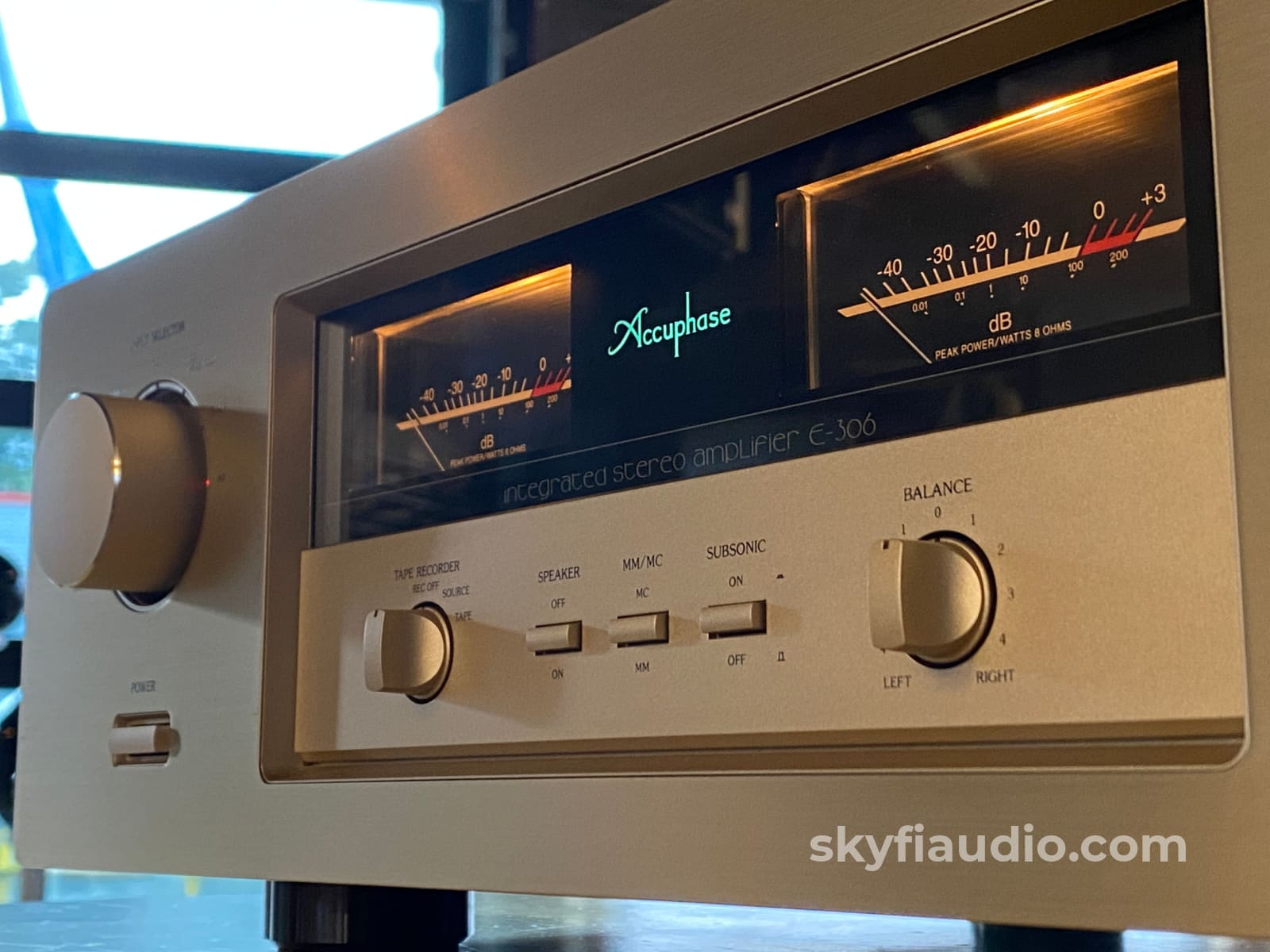
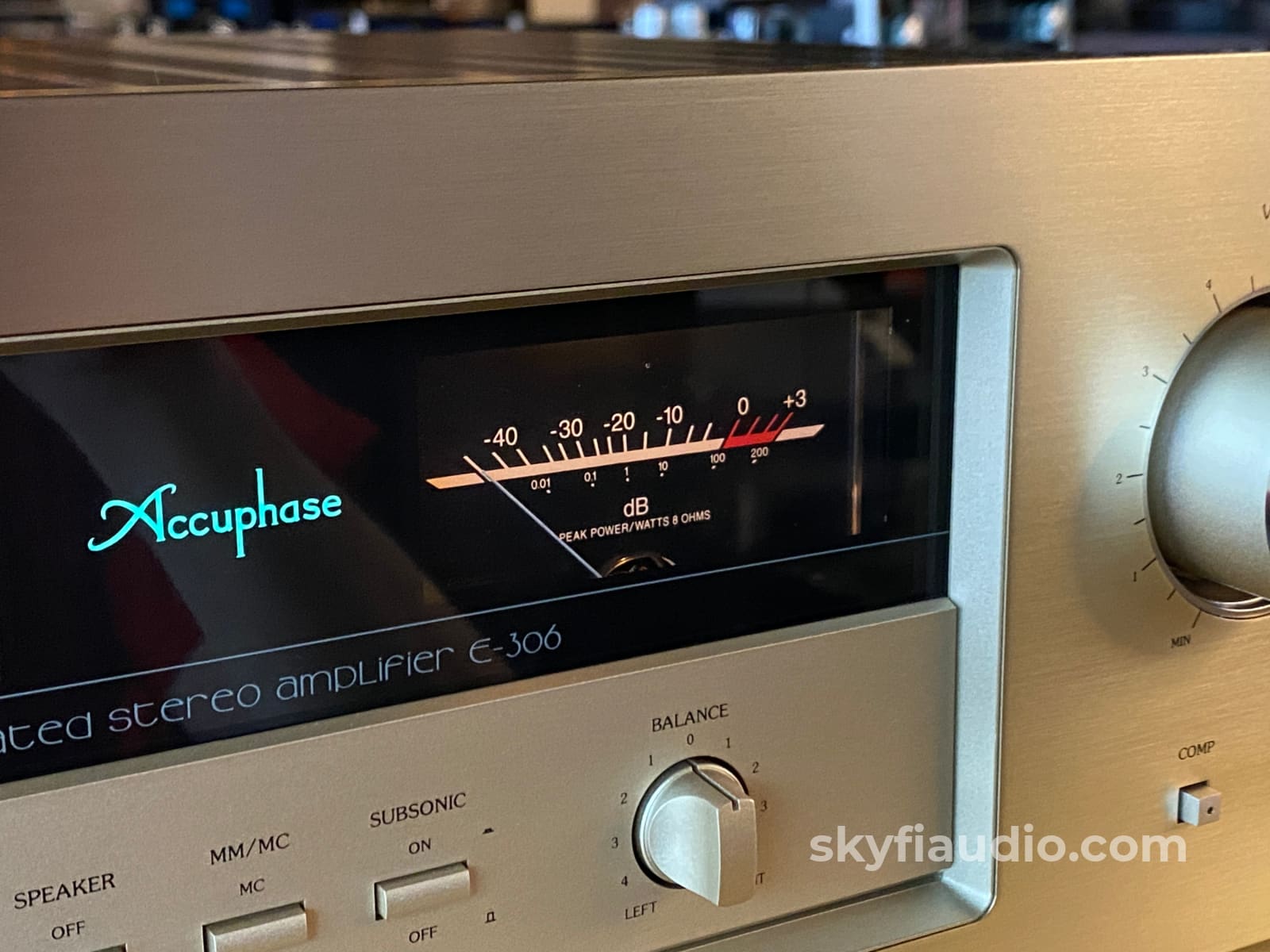
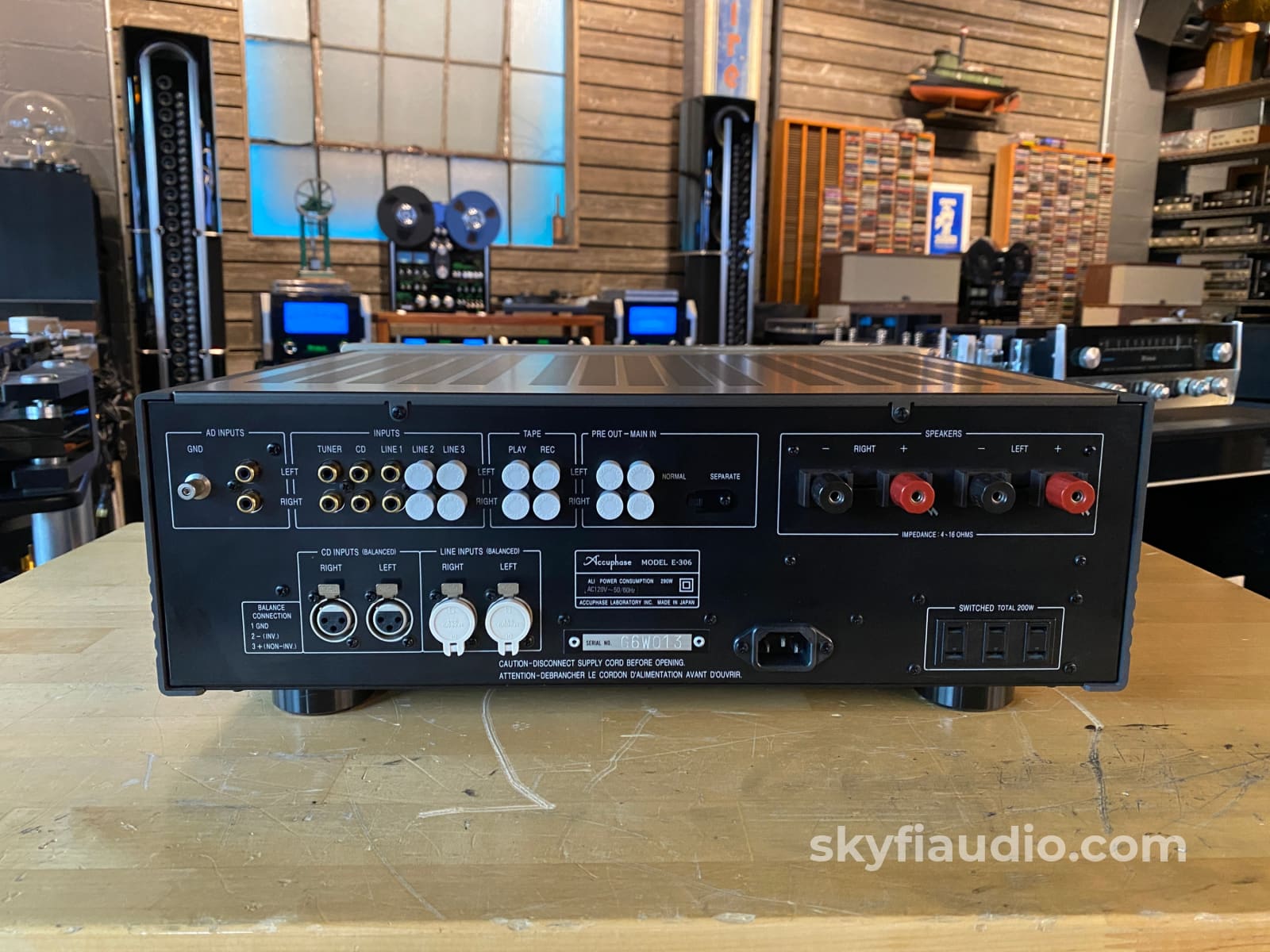
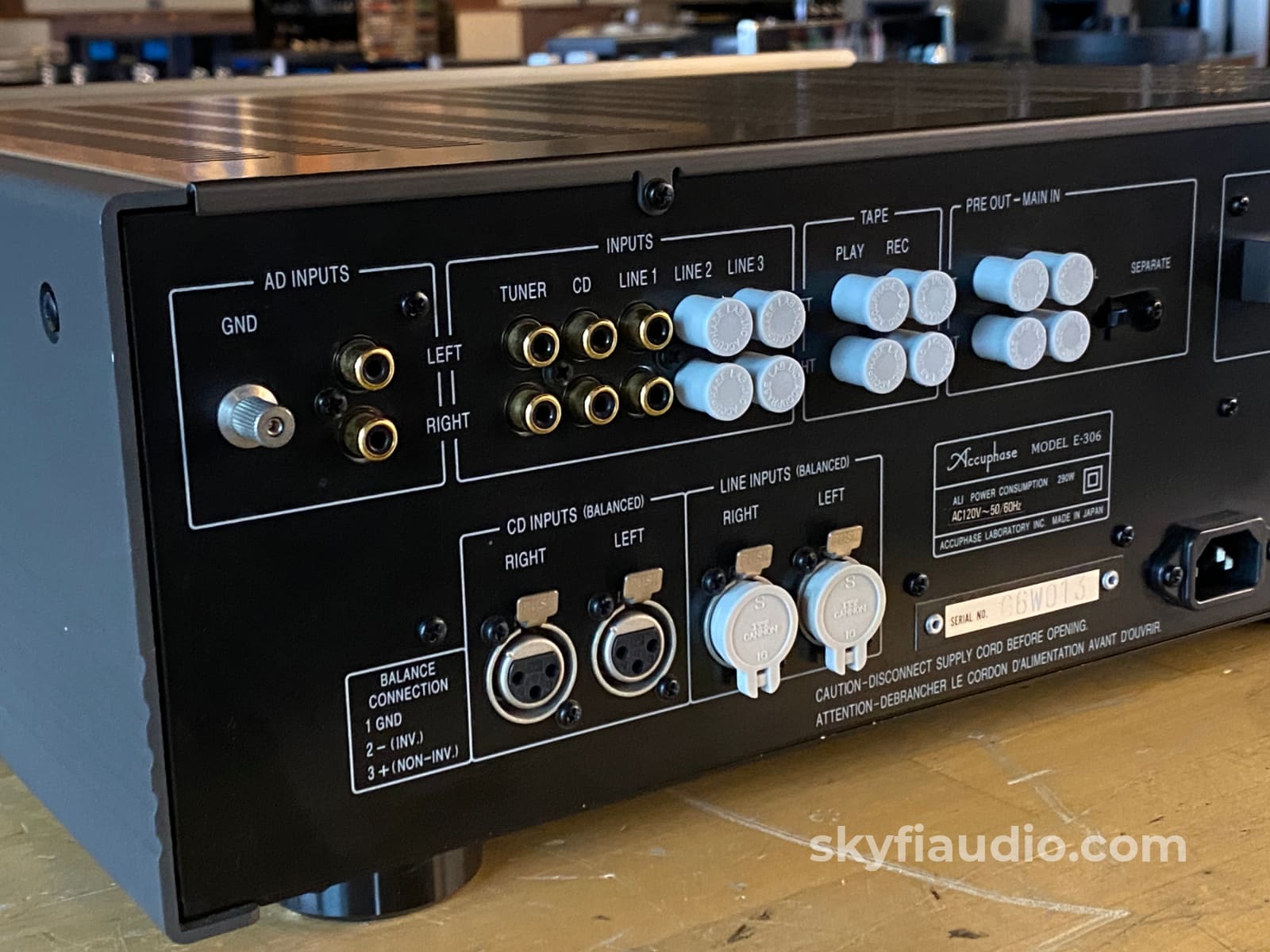
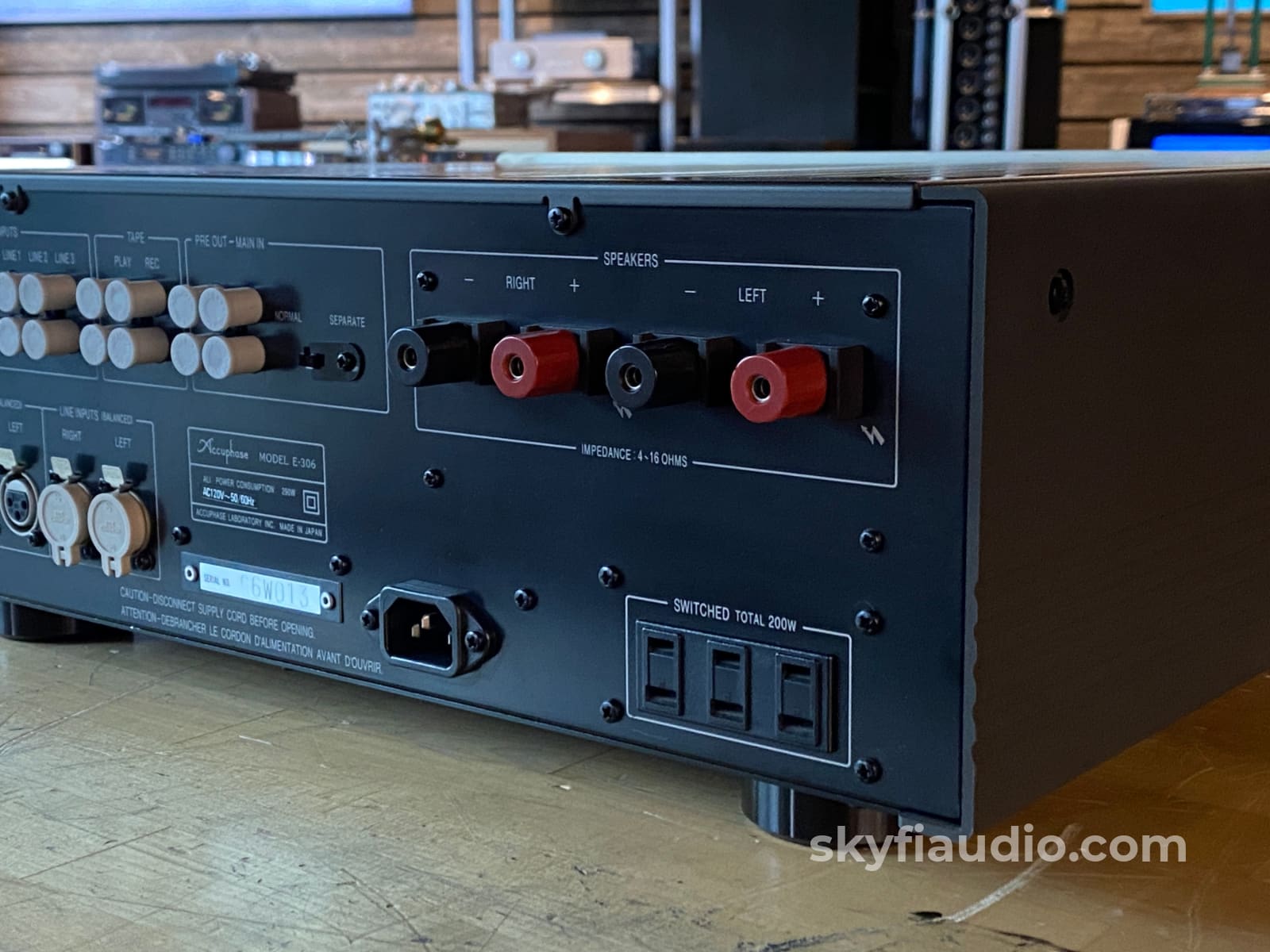
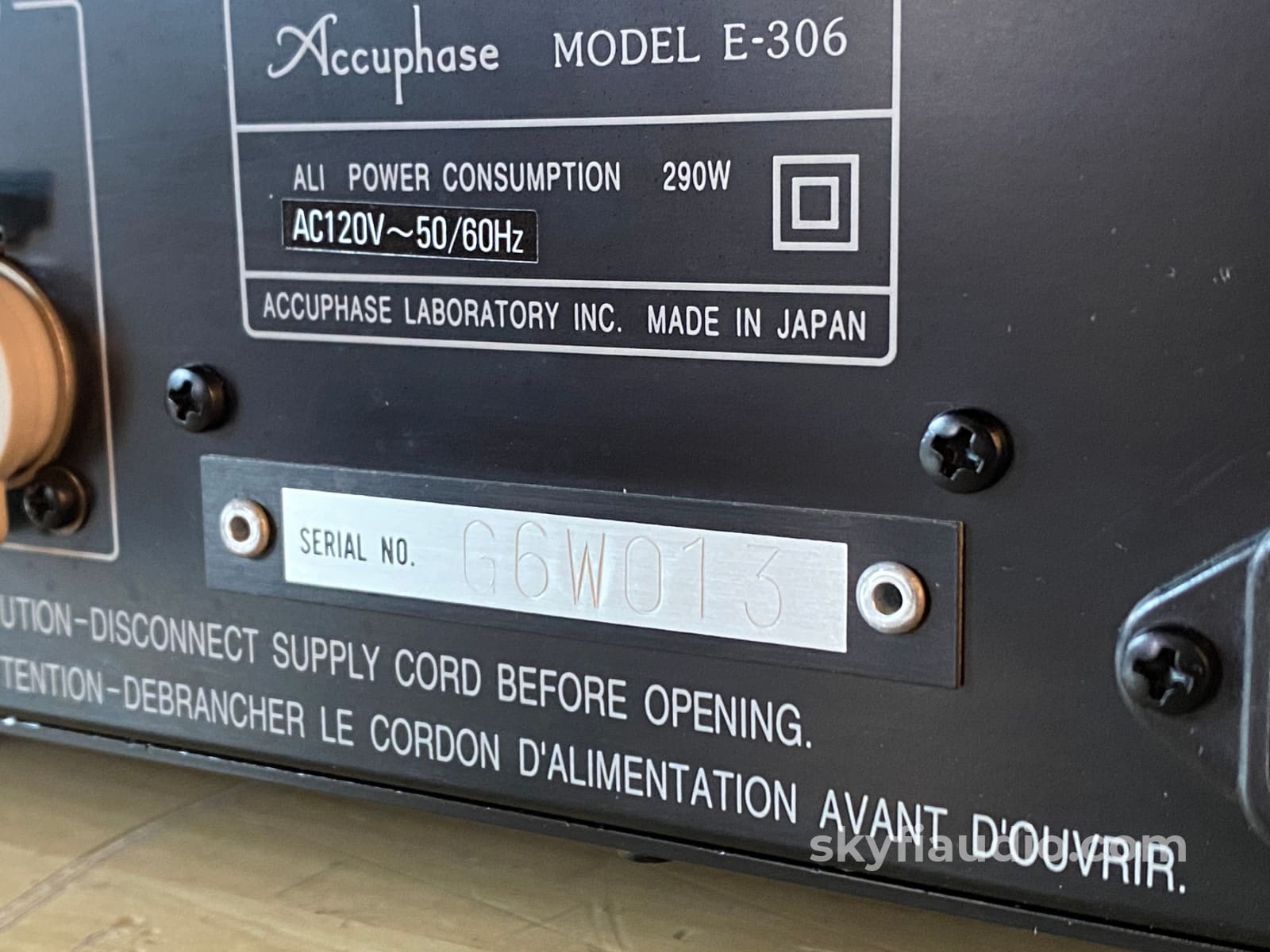
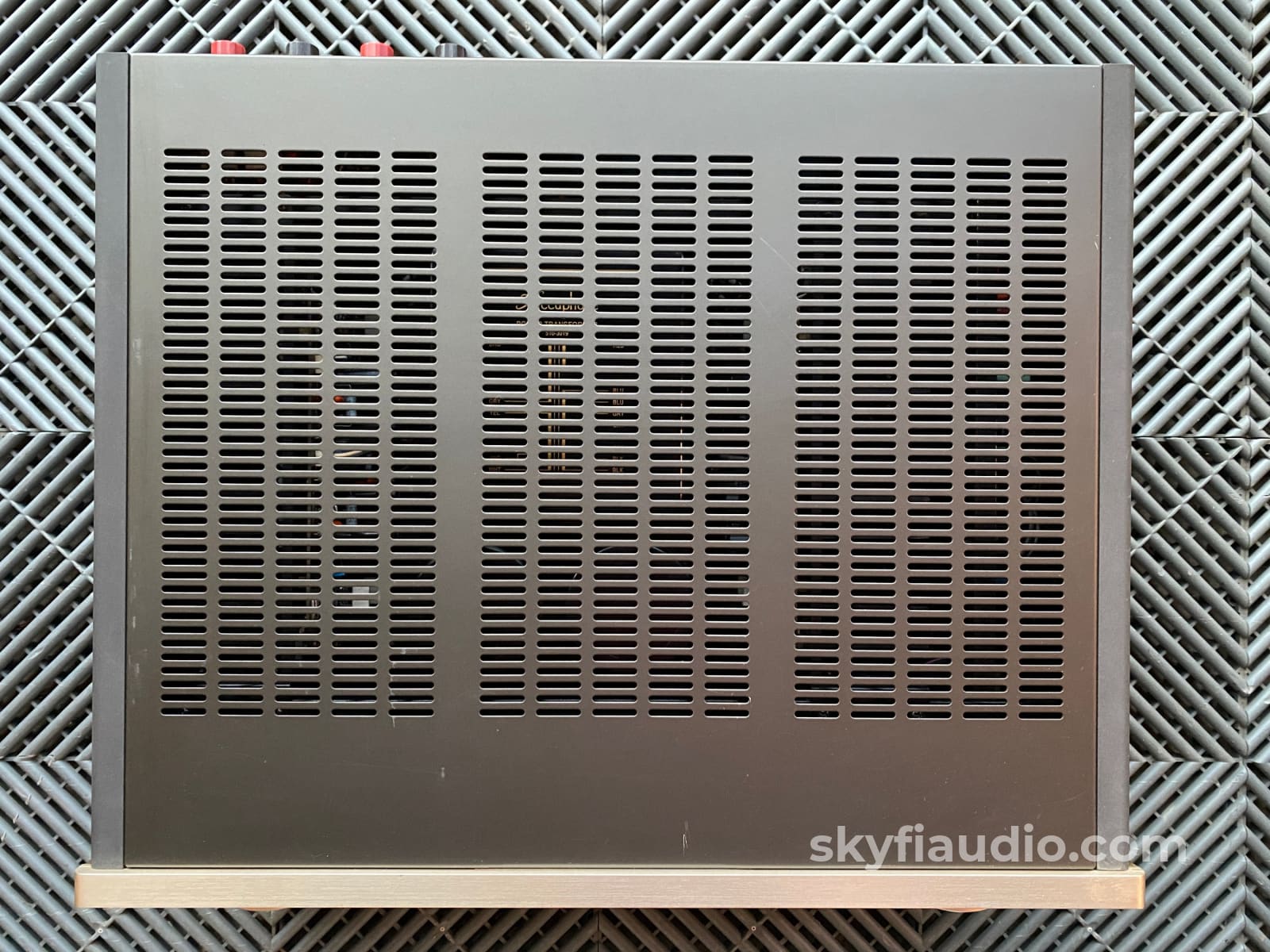
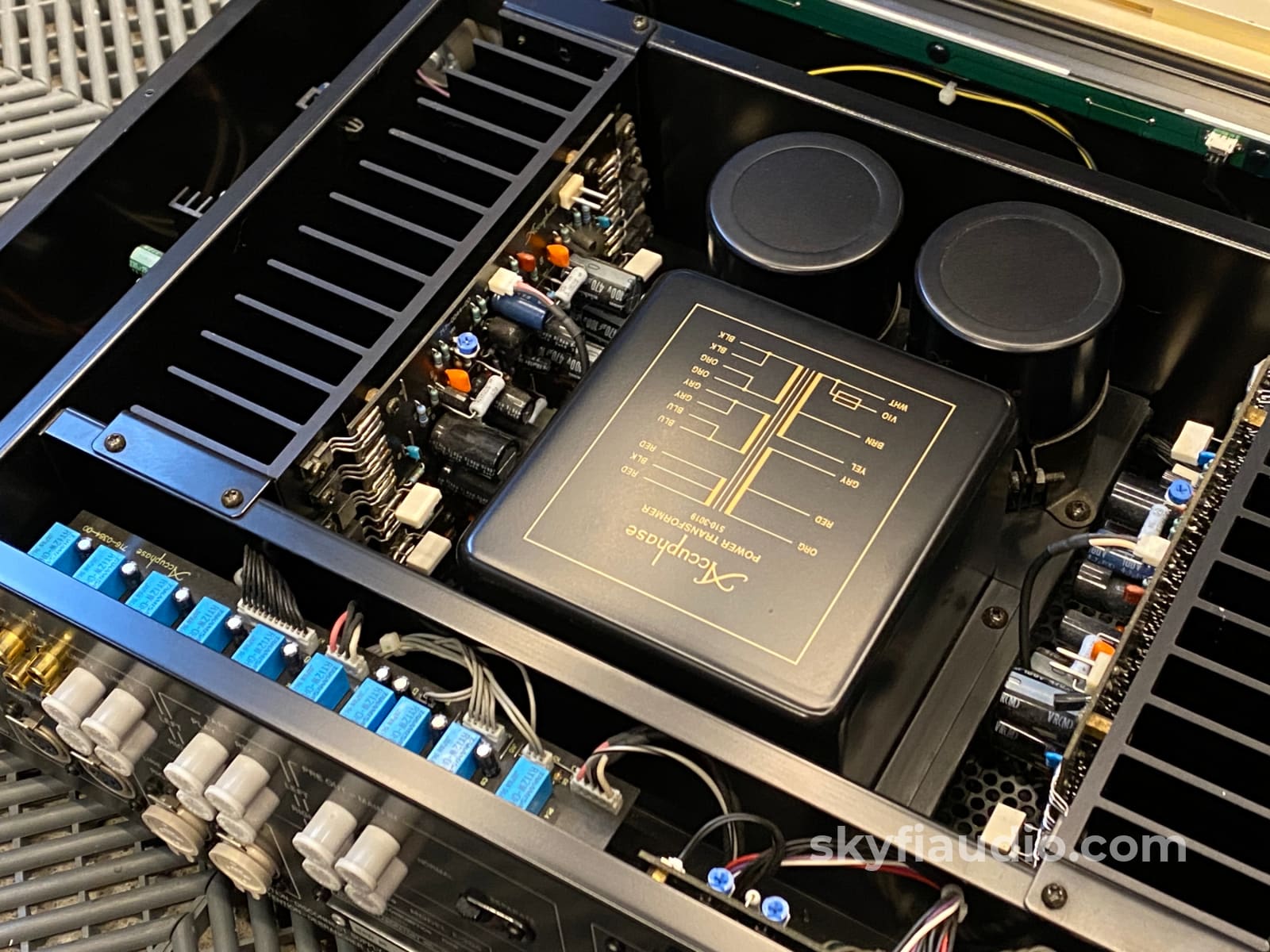
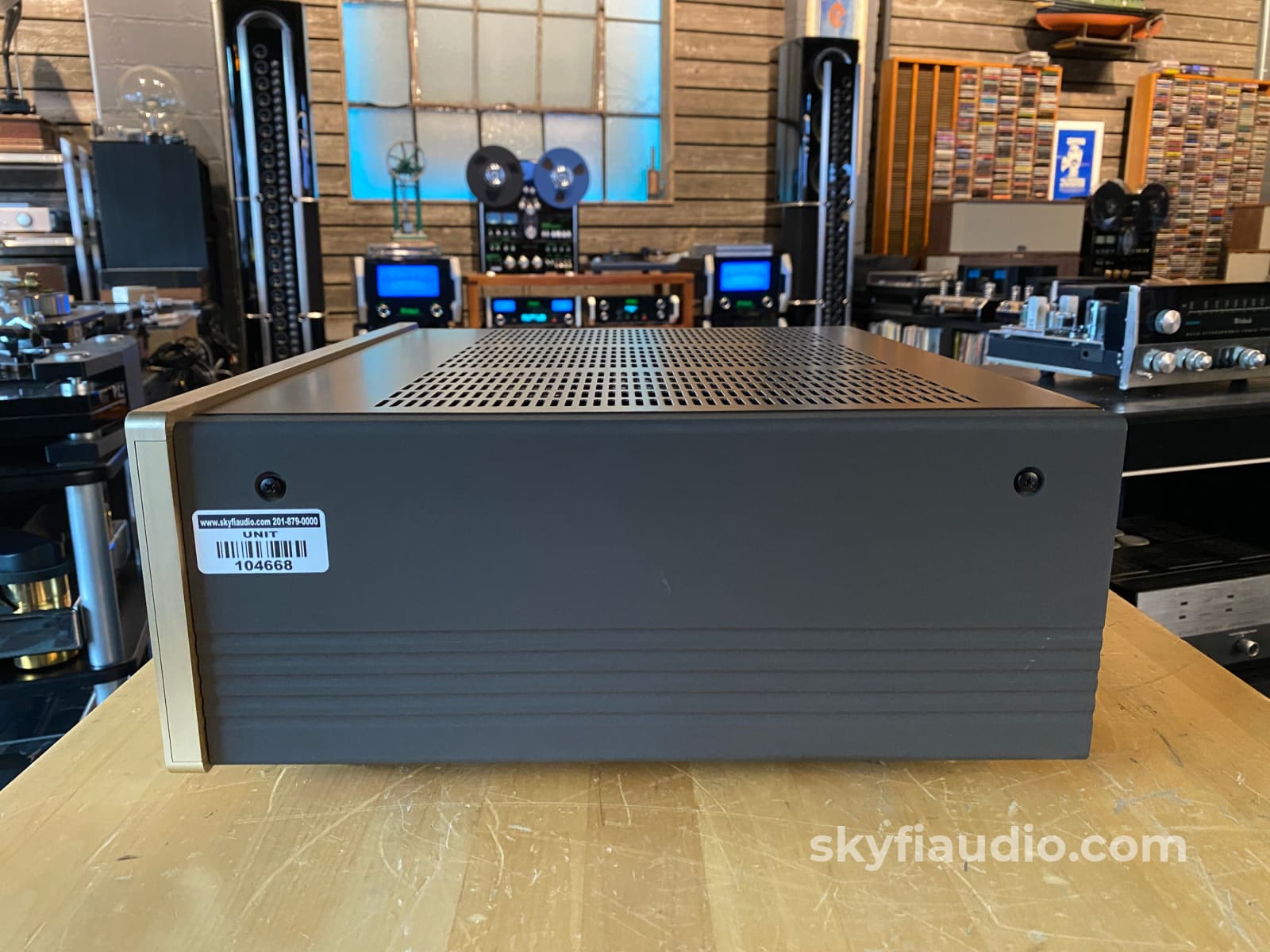
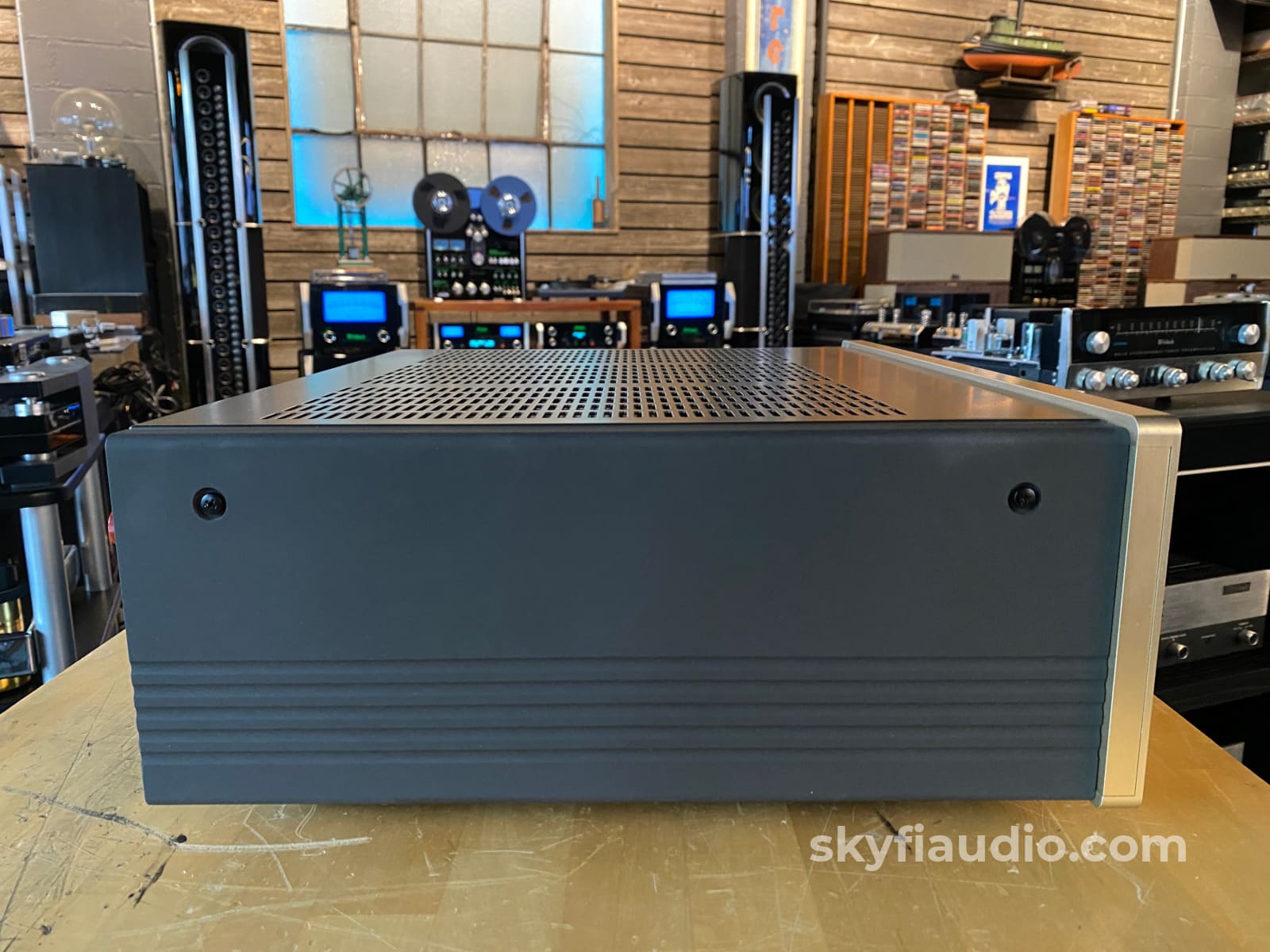
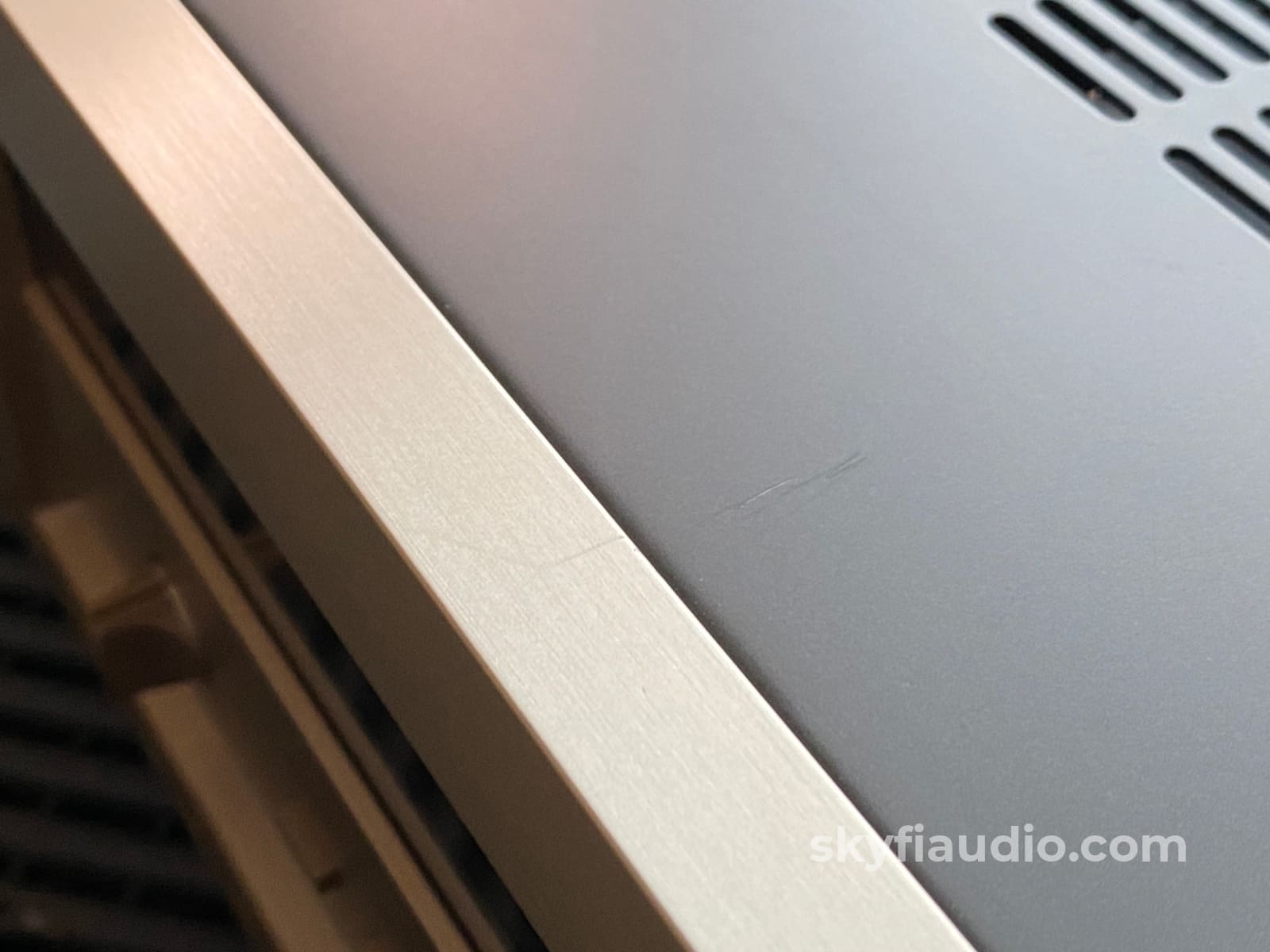
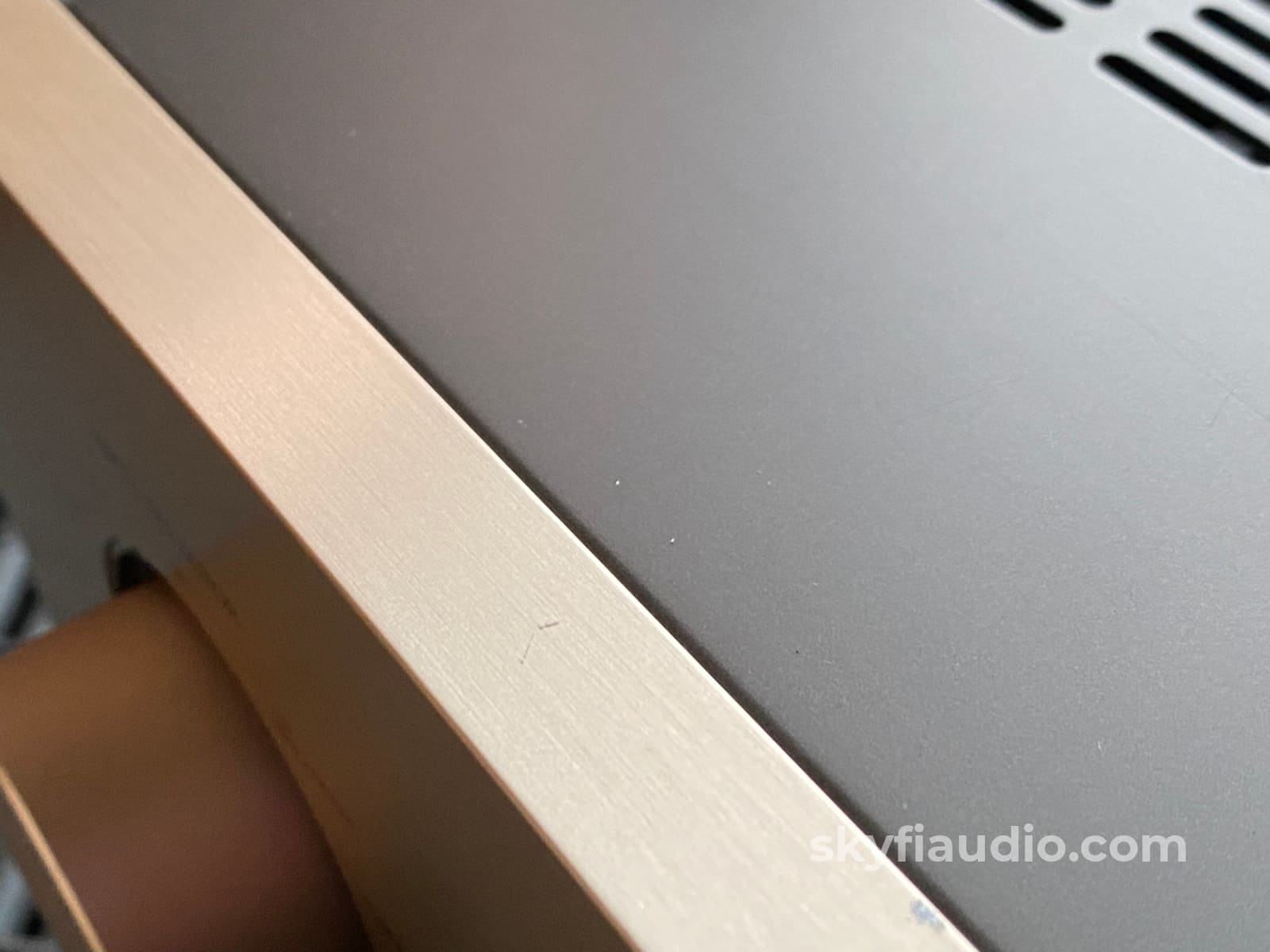
Accuphase E-306 Integrated Amplifier - 100 WPC - Made in Japan
Free Shipping on Most Electronics - Excludes Speakers and Items Requiring Freight - Contiguous U.S. Only
Pickup currently unavailable at SkyFi 479

Accuphase E-306 Integrated Amplifier - 100 WPC - Made in Japan
SkyFi 479
479 South Broad Street
Glen Rock NJ 07452
United States
General:
You'll notice this beautiful integrated amp is not easy to find stateside.
Accuphase integrated units tend to be one of our best sellers and are a great alternative to McIntosh and Luxman.
They feature exemplary build quality and superb engineering resulting in a smooth, uncolored, and well balanced sound. Notice this unit is made in Japan, not China.
SkyFi Service Notes:
- Balance and Volume controls cleaned
- Bias Checked
- Meters calibrated
- Thorough internal and external cleaning
Cosmetic Notes:
- Light marking on top cover
- Tiny ding to bottom left corner of faceplate
- Slight imperfections in meter windows
- One tiny ding and small scratch on top surface of faceplate
Brand Background:
The name ACCUPHASE was adapted by taking the prefix ACCU from the word "accurate", and combining it with PHASE which is a most important factor in audio technology. We feel it is a very fitting brand name to describe our products that fully portray this and other important characteristics, which penetrate the innermost depth of audio technology. Our endless pursuit of quality requires a very high degree of processing which persuades us to avoid the use of mass production systems. Consequently, production volume is limited and Accuphase products are available only at a restricted number of specialized stores.
Accuphase equipment is not subject to the whims of market fashion since they are made, above all, to achieve true high fidelity sound reproduction. This is the foremost reason why our products have enjoyed long-run production.
Ownership:
Single Owner
Connections:
Number of inputs:
Tuner, CD, 2x Line, 1x Recorder (Cinch): 113 mV / 20 kOhm (at rated power).
1x Balanced (XLR): 113 mV / 40 kOhm (at rated power).
Number of outputs:
1x Recorder Out (RCA).
Headphones (6.3 mm jack): 8 - 100 Ohm
1 speaker pair(4-16 Ohm)
General Sound:
Smooth, uncolored, undistorted natural and clean
Cosmetic Condition:
7/10 = Good. One or two minor scratches. Well Maintained. See our detailed rating description here.
Working Condition:
Working perfectly and tested in our lab and listening room.
Included:
Just the unit and power cord.
Packing:
Will be packed using our highly developed in-house process and custom packing materials.Specs:
Power output: 100 watts per channel into 8Ω (stereo)
Frequency response: 20Hz to 20kHz
Total harmonic distortion: 0.04%
Damping factor: 120
Input sensitivity: 0.11mV (MC), 3.9mV (MM), 113mV (line)
Signal to noise ratio: 70dB (MC), 85dB (MM), 110dB (line)
Output: 110mV (line), 1.11V (Pre out)
Speaker load impedance: 4Ω to 16Ω
Dimensions:
18.70" x 16.46" x 6.70" (475 x 418 x 170mm)
Weight:
44 lbs.
Approximate Age:
1997
Link to Manual:
Click Here
Recommended Cables:
Kimber Kable - BALANCED XLR Connectors - Better
Kimber Kable - BALANCED XLR Connectors - Best
Kimber Kable - RCA Interconnects - Better
Kimber Kable - RCA Interconnects - Best
Kimber Kable - Phono Interconnects - Better
Kimber Kable - Flagship Phono Interconnects - Best
The SkyFi Testing Process for Integrated Amplifiers:
We start with a visual inspection of all internal components to make sure that there are no signs of heat stress or damage. Capacitors are checked for telltale signs of predictive failure including bulging, shrunken wrappers, or physical leakage. We also inspect the PCBs for discoloration from resistors or transistors that may have been running hot. On vintage units we often spot check select capacitors for value and ESR.
If the device has the ability to decouple the preamplifier from the power amplifier, we remove the jumpers and independently test each section. If the device cannot be decoupled, we assess the electronic condition of the piece by analyzing the speaker level output only.
We start by connecting the “preout” jacks of the integrated to a Sencore PA81 Power Analyzer which simulates real world loading conditions and gives us an oscilloscope interface. The first order of business is checking that the volume control works smoothly throughout its entire range with acceptable channel balance. This is accomplished by feeding a 1KHz sine wave into one of the preamp’s line level inputs while monitoring the preamp’s output on an oscilloscope. We then switch to a 1KHz square wave to test the tone controls, loudness function, and filters where applicable. During this step we are watching for equal alteration of the test signal by both channels. This also helps us identify dirty controls that will need treatment. Once the basic line stage functions are verified, we test each input individually. This is especially important for devices that use relays to select their sources. If the preamp section is equipped with a phono stage we test that as well. We use an inverse RIAA filter which allows us to feed a reference test signal into the phono input with the proper RIAA equalization and level. A square wave or sine sweep is used to verify that the device’s phono stage is faithfully reproducing the RIAA curve.
Next, we test the power amplifier section by connecting the integrated’s speaker outputs to a Sencore PA81 Power Analyzer which acts as a dummy load, DC offset monitor, and oscilloscope interface. We start with a low level 1KHz test signal at the “main in” jacks and slowly increase its amplitude while monitoring the output on an oscilloscope for signs of noise, clipping, distortion, or improper channel balance. We continue increasing the signal level until the amplifier reaches clipping. At this point we take an output power measurement and compare it to the spec sheet of the amplifier to verify proper performance.We finish off the bench evaluation with a 1KHz square wave check and a 20Hz to 20KHz sine sweep to assess the amplifier’s frequency response characteristics. This battery of tests will usually reveal if the amplifier has any issues that need further attention.
If the preamp and power amp both pass these tests, we reconnect the sections and verify that the preamp section can drive the power amp to rated power with a 1KHz tone on one of the line level inputs.
Before the device leaves the bench, we perform a listening test with actual music using a variety of preferred test tracks. Our benches are outfitted with familiar monitor speakers which help us identify inconsistencies that will not always show up on our test gear. The main things that we are listening for are hum or noise with no signal present, proper center image, clicks, pops, or any other obvious undesirable audio characteristics.
If the unit passes all of these tests it is moved to our long term testing rig where we simulate real word operating conditions for 6-8 hours. This allows us to monitor the unit for signs of thermal runaway or intermittent issues that only crop up when the unit has fully come up to temperature.
Choose options
